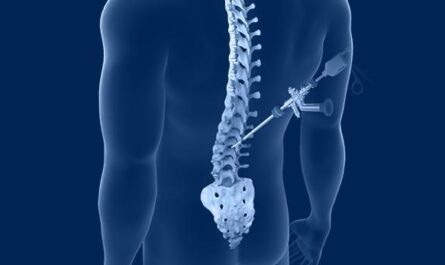Spine surgery is often viewed with fear and uncertainty due to misconceptions that have circulated over the years. These myths can deter individuals from seeking treatment, potentially prolonging pain and discomfort. In this blog, we will address some of the most common myths about spine surgery and provide clarity to help you make informed decisions.
Myths: Spine Surgery is Extremely Risky
Reality: While all surgeries carry some level of risk, advances in medical technology and techniques have significantly reduced the risks associated with spine surgery. Surgeons now use minimally invasive procedures that offer quicker recovery, less pain, and smaller incisions. Complications are rare, especially when performed by experienced surgeons.
Myth: Spine Surgery is the Only Treatment for Back Pain
Reality: Spine surgery is often the last resort. Doctors can manage most back pain cases through conservative treatments like physical therapy, medications, and lifestyle modifications. They consider surgery only when these methods fail or when structural issues, such as herniated discs or spinal stenosis, are identified.
Myth: Recovery from Spine Surgery Takes Forever

Reality: Recovery times vary depending on the type of surgery and the patient’s condition. Minimally invasive spine surgeries allow for shorter recovery periods, with many patients resuming normal activities within a few weeks. Your surgeon will provide a personalized recovery plan to help you heal faster.
Myth: Spine Surgery Will Lead to Paralysis
Reality: The fear of paralysis is one of the most common reasons people avoid spine surgery. However, this is an extremely rare outcome. Modern imaging techniques, such as MRI and CT scans, help surgeons precisely identify the problem areas and avoid sensitive nerve structures, reducing the risk of complications.
Myth: Spine Surgery Means Permanent Metal Implants
Reality: Not all spine surgeries involve metal implants. While some procedures, like spinal fusions, may require rods or screws for stability, many surgeries do not. Even when doctors use metal hardware, they design it to support the spine during healing without limiting future mobility.
Myth: After Spine Surgery, You’ll Never Be the Same Again
Reality: Most patients experience significant pain relief and return to their normal daily activities after spine surgery. With proper rehabilitation and physical therapy, many individuals regain full function and even resume physical activities they had previously avoided due to pain.
Myth: Spine Surgery is Only for Older People
Reality: While spine problems are more common in older adults due to wear and tear, people of all ages may require spine surgery. Injuries, congenital spinal issues, or herniated discs can affect younger individuals, and doctors may recommend surgery if other treatments do not help.
Conclusion
Spine surgery has evolved significantly, and many of the fears surrounding it are based on outdated information. If you are experiencing chronic back pain or other spine-related issues, it’s essential to consult a qualified spine specialist who can offer accurate advice and treatment options tailored to your needs.
By understanding the facts, you can make an informed decision and take steps toward improving your spine health.




